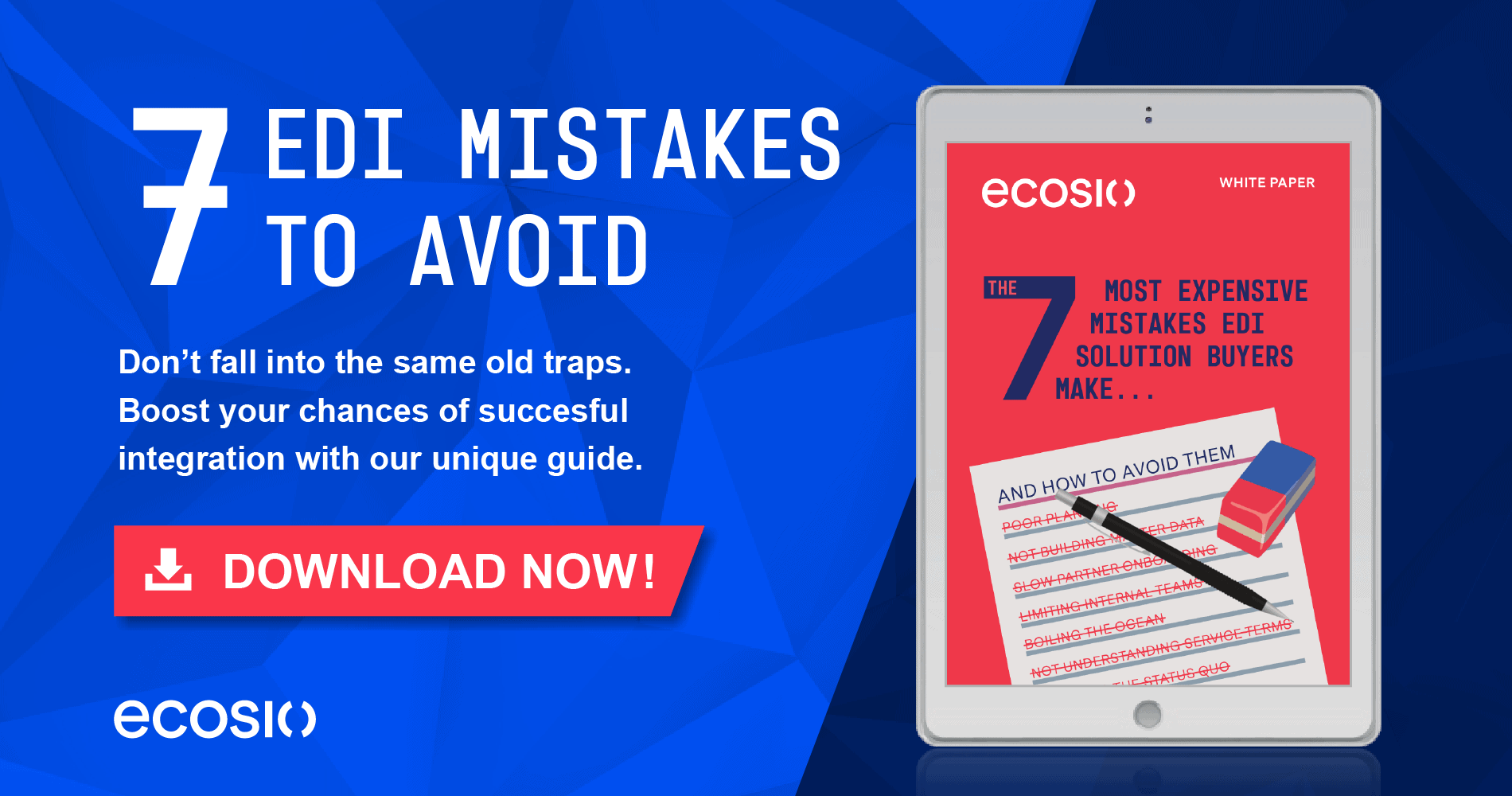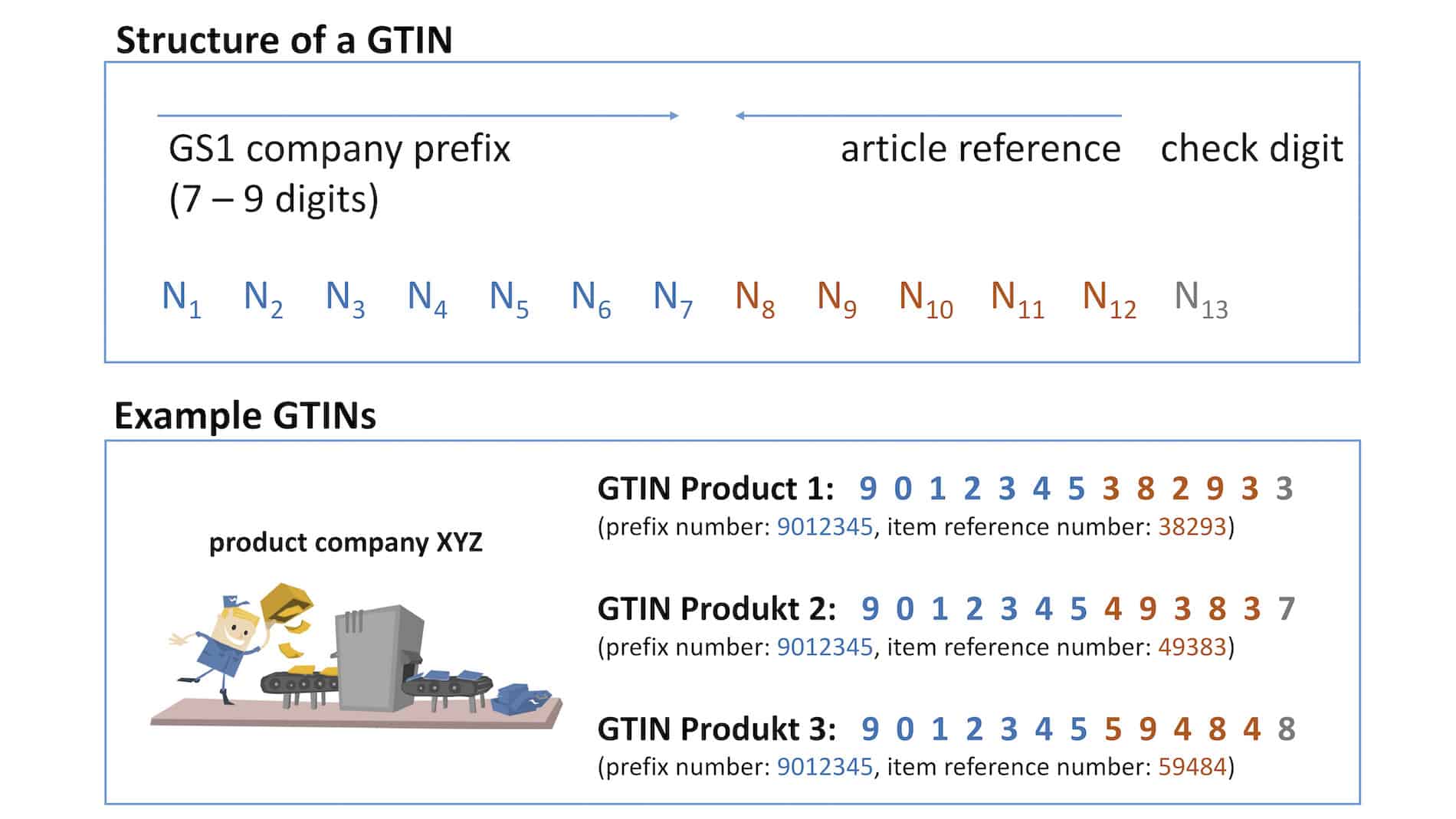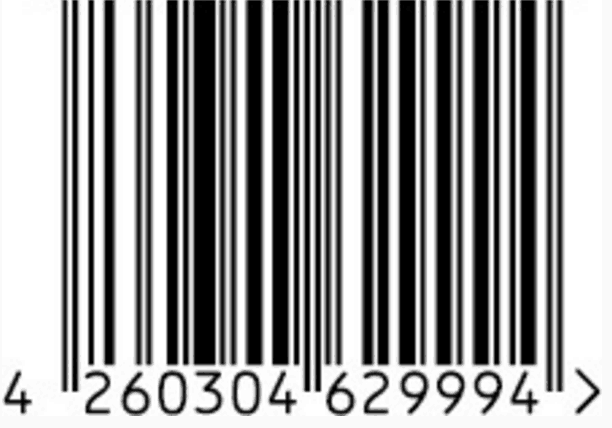What does GTIN stand for?
GTIN is the abbreviation for Global Trade Identification Number. As with GLN, the acronym already contains the term “number”, so we’re just speaking about GTIN instead of GTIN number.
In many cases, the old term EAN (European Article Number) is still used today.
What do I need a GTIN for?
A GTIN is used the unique identification of products and services without any overlapping between two items. Thus, a GTIN guarantees the global uniqueness of a product or service identification. Let’s take a supermarket for example. Identifying specific products by only using their names is not suitable for the following reasons:
- Different products can have the same or a similar name
- The same product can be referred to by different names from different supply chain participants. The manufacturer of a product could name it
Milk skimmed 1lwhereas the logistics company would call itProducer xyz Milk skimmed 1land the offering supermarket usesExtra skimmed milk 1l. Without having a strict and unique identification key, such as a GTIN, the integration of supply chains can be very challenging, as misunderstandings in communication tend to happen more often than not. - Names are generally bad for the identification of products in EDI transactions. IT professionals prefer using unique identifiers that allow for an unambiguous and non-overlapping identification. In the context of databases, one would refer to these as primary keys.
GTINs are a huge help as they allow the unique identification of products throughout multiple companies and different countries.
Especially as a small or medium sized business, one gets confronted with GLN and GTIN when trying to implement EDI with a (typically larger) trading partner. In the course of exchanging invoices, advance shipping notices, orders etc. with these partners, GTINs will be used for the identification of products and services.
How is a GTIN structured and what is the link to a GLN?
In one of our latest blog posts we have already looked at the usage of Global Location Numbers – GLN for the unique identification of companies. There is a direct link between a company’s GLN and the GTINs it is using.
To create a GTIN, a company needs to be in possession of a GS1 company prefix. The assigned company prefix forms the base for the creation of all GS1 identifiers like GLN, GTIN and SSCC numbers. Once again, the following picture shows the structure of a GLN (GS1 prefix number 9012345) as well as the example GLN 9012345000004.
Based on the GS1 company prefix, it is possible to create multiple GTINs. Depending on the purchased GS1 prefix license, the company can create up to 100,000 GTINs.
The GTIN is generated by using the GS1 company prefix number, following with the item reference and ending with a checksum. The first three digits of the GS1 company prefix is the GS1 country code which can be used to acquire the country where the GS1 company prefix was assigned in.
The image above shows the structure of a 13-digit GTIN. Apart from the 13-digit GTIN, there are also 8, 12 and 14-digit GTINs. The difference between the GTIN classes is also explained on the GS1 website.
Is there a connection between the barcode of a product and its GTIN?
Whenever possible, the GTIN will be attached to the product via a barcode label. This label contains the GTIN in a coded form, allowing it to be read automatically. The scanning is typically done using a barcode reader, similar to the way items are scanned at the checkout till in a supermarket. The following image shows an example barcode with its attached GTIN as found on regular products.
Can the GTIN be used to identify the associated company?
Like with a GLN, it is not possible to identify the related company by looking at the GTIN only. To find out who the GTIN belongs to, one must use the directories of the appropriate GS1 organization or ask the company directly, which GTINs are in use. The GS1 directories are called GEPIR (Global Electronic Party Information Register).
Please note: There are companies who don’t publish a full set of their GLNs and GTINs in the GEPIR directories.
Which requirements are needed to be able to use a GTIN?
Let us summarize the necessary requirements a company needs to satisfy to make use of a GTIN:
- A GS1 company prefix, which is used as the base for GTINs. Depending on number of GTINs needed, there are multiple prefix classes one can choose from. For further details please refer to the following blog post on the topic of GLNs.
- Internal article numbers are needed for the article reference in the GTIN (see illustration above).
- Checksum for the created GTIN base numbers. (GS1 company prefix + article reference)
- An implementation of the GTINs in the internal IT systems as well as an EDI connection to the trading partners, such as customers and suppliers.
Do you have any questions?
Do you still have questions about GTINs? Feel free to contact us, we would love to help you!
















